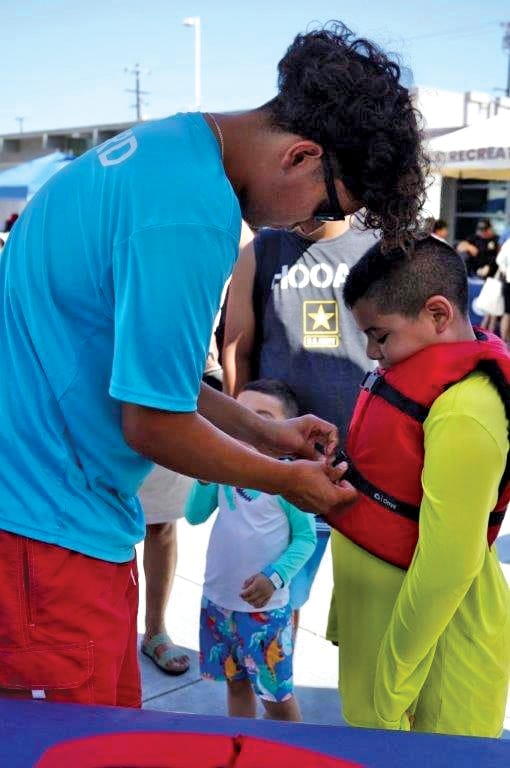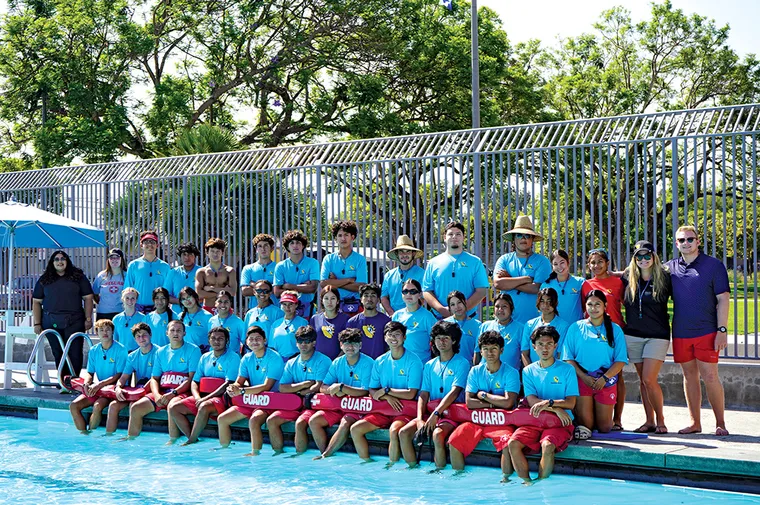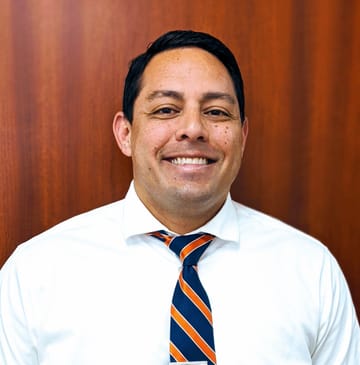A transformative journey for Santa Ana
In 2022, the City of Santa Ana, Calif. embarked on a transformative journey to bring its aquatic programming back in-house, marking a bold shift in its approach to community services. For over a decade, the program had been outsourced, but with the conclusion of the contractor agreement and evolving priorities of the city council, Santa Ana’s leaders saw an opportunity to take control of its aquatic future. This decision, driven by the need to address systemic inequities in water safety, has since reshaped the way residents engage with aquatic education and recreation.
Rekindling Community Connections While Addressing Critical Needs
Santa Ana’s commitment to its aquatic program has significantly strengthened community engagement and equity, particularly in addressing the unique needs of its diverse population. Through a culturally responsive approach, the program aims to bridge generational gaps and eliminate systemic barriers to water-safety education. With a 77% Hispanic population, Santa Ana prioritizes affordable, culturally relevant aquatic programs to overcome challenges such as cost, access, and language. This focus is crucial in addressing the disproportionately high drowning rates among Hispanic/Latino children, a demographic that often lacks swimming proficiency.
Emphasizing the program’s broader impact, Recreation Supervisor Kristin Moorman says, "Our goal is to create a ripple effect of water safety and confidence throughout the Santa Ana community. By providing affordable and culturally responsive programs, we’re not just teaching people how to swim—we’re building lifelong skills that save lives and foster a stronger connection to water."
Key to this transformation was securing consistent funding and hiring the right staff. The Cannabis Public Fund, supported by the city’s cannabis sales tax, played a large role in launching the new aquatic program. This innovative funding source has become a lifeline for youth service programs in Santa Ana, directly enabling the aquatic program to take root. The fund allowed the city to hire two full-time positions—Recreation Supervisor Kristin Moorman and Recreation Coordinator Evelyn Medina—to lead the program. Both seasoned professionals brought a deep passion for aquatics along with the advanced certifications required to train and certify future staff in-house. Their combined expertise eliminated the need for contracted training services, and, as a result, the city saves tens of thousands of dollars annually, allowing reinvestment of those resources back into the community.

Tackling Workforce Challenges With Innovation
To address ongoing challenges related to a nationally recognized lifeguard shortage, Santa Ana introduced the Emerging Lifeguard Leaders (E.L.L.) initiative. This innovative program cultivates local talent by providing comprehensive swim and lifeguard training, alleviating staffing shortages, and fostering a deeper connection between residents and their local aquatic programs. Through E.L.L., community members are equipped with valuable skills and provided pathways for careers in aquatics, emergency services, and education, transforming workforce challenges into opportunities for growth and leadership.
Medina, the Recreation Coordinator, says, "This program is about more than just swimming—it’s about breaking barriers. We’re creating opportunities for families to engage with aquatics in ways that feel accessible and inclusive, empowering residents to embrace water safety and recreation as a vital part of their lives."
National Recognition And Media Exposure
National media exposure has amplified the program’s impact. In July 2023, The New York Times published an article titled “Drowning is the No. 1 Killer of Young Children. U.S. Efforts to Fix It Are Lagging,” featuring the story of a local family whose perspective on water safety was transformed after participating in the program’s Learn-to-Swim lessons. Santa Ana resident Yadira Salcedo told The Times about how she almost drowned when she was a child. She went on to talk about her desire to “break the cycle” with her two sons. Their story highlights the transformative impact of the program generationally. By addressing disparities and offering meaningful opportunities, Santa Ana Aquatics has created a model for how community-centered, inclusive programming can empower residents and build a safer, more connected community.
Leveraging Partnerships For Impact
Santa Ana Aquatics has also leveraged strategic partnerships to expand its reach and eliminate barriers to access. Grants from organizations such as the American Red Cross, Kaiser Permanente, and the USA Swimming Foundation have enabled the program to offer reduced-cost swim lessons, making them accessible to families across all economic levels. In 2024 alone, these partnerships facilitated 916 scholarships—a remarkable 143% increase from the previous year.
The program’s growth underscores its transformative impact. Learn-to-Swim lessons increased from 3,066 in 2023 to 3,814 in 2024, reflecting a 24% rise in participation. These lessons not only equip participants with life-saving skills but also break cycles of fear and inaccessibility, fostering a culture of water safety within the community.
Outreach efforts extended beyond the pool, with events like the OC Summer Safer Pool Party, bringing water-safety education directly to families. Collaborations with the Orange County Health Care Agency and the Jasper Ray Foundation ensured that these gatherings featured bilingual, hands-on experiences, including CPR demonstrations and lifejacket fittings. By meeting residents where they are, Santa Ana Aquatics empowered families with the knowledge and tools to confidently navigate water environments.
A Sustainable Model For Other Communities
Santa Ana’s journey to bring aquatic programming in-house serves as a model for other municipalities, demonstrating how visionary leadership, strategic partnerships, and a commitment to inclusivity can create lasting change. Through a focus on trust-building, empowering residents, and building a legacy of water safety, Santa Ana is setting a precedent for communities striving for environmental and social responsibility.
To support this vision, the City has invested in a $29-million, solar-powered aquatic center slated to break ground in early 2025. Designed to serve as a hub for recreation and water-safety education, the state-of-the-art facility features a recreational pool designed with the Santa Ana community in mind, complete with a lazy river, water slide, and dedicated zones for lessons and fitness classes, as well as a 25-meter competition pool. This commitment to sustainability and equitable access positions Santa Ana as a forward-thinking leader in public infrastructure, ensuring that every resident has the opportunity to thrive in and around water for years to come.


